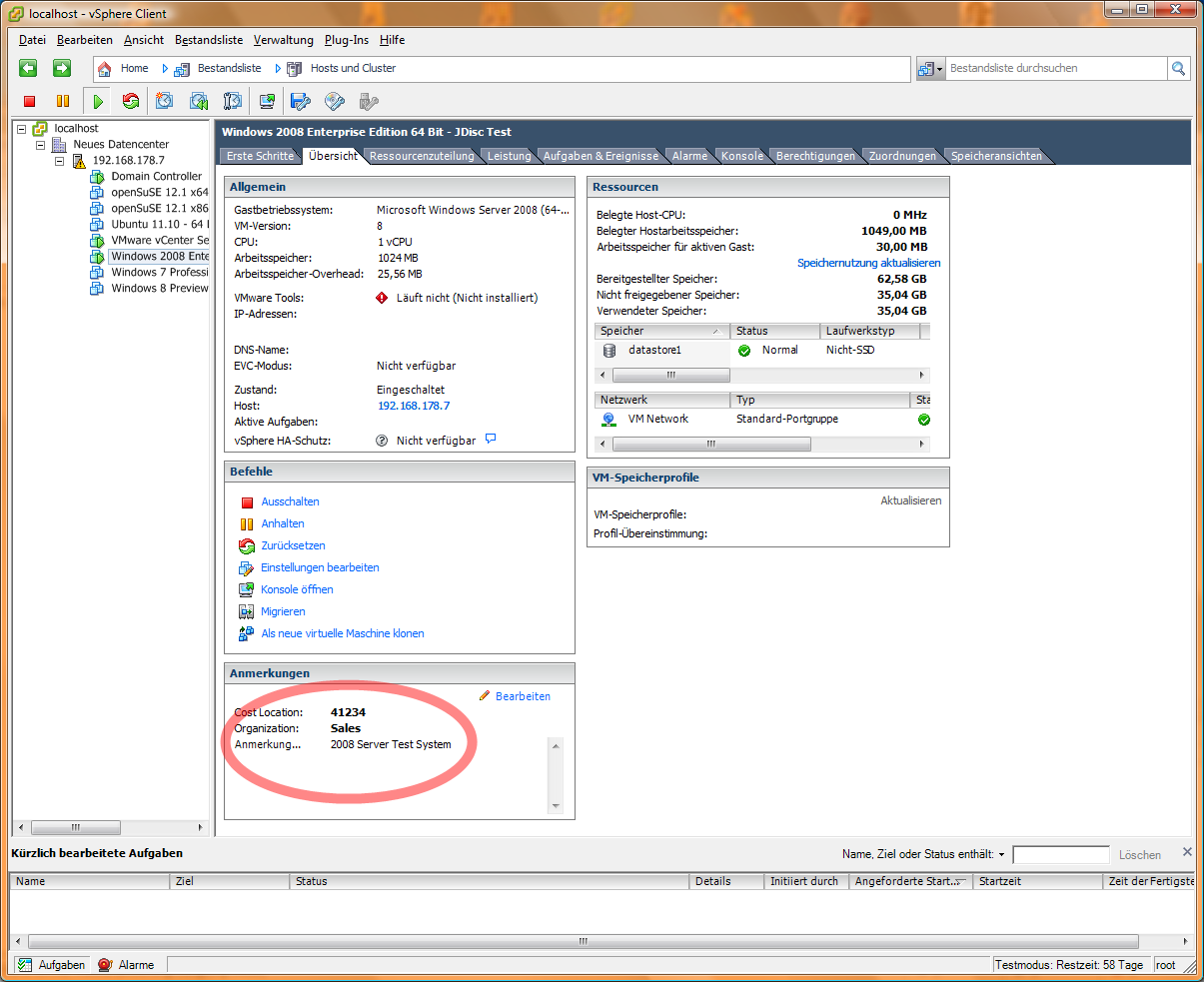Collecting VMware Custom Attributes

 In my previous post about simple ideas, I was talking about the custom attribute collection for VMware. Now, the implementation is done and this new feature becomes part of the coming release 2.8!
In my previous post about simple ideas, I was talking about the custom attribute collection for VMware. Now, the implementation is done and this new feature becomes part of the coming release 2.8!
As usual, it was not that easy as we thought in the beginning. But finally, our R&D team got the job done. Technically, custom attributes within VMware get mapped to custom attributes within JDisc Discovery. There is no need to create the custom attributes within our network documention solution upfront. Our discovery creates them on the fly as they get discovered.
The image below illustrates how the custom attributes appear in vCenter’s overview page. The lower area of the screen (marked in red) lists the custom attributes for the selected VM. For testing purposes, we created two custom attributes:
- Cost location
- Organization
When JDisc Discovery finds the vCenter installation, then it reads all custom attributes for the active VM instances. When a custom attribute is not yet defined within JDisc Discovery, then it creates a new custom attribute within the “VMware/Instance” subtree.
The built in annotation property appears on the VMware level.
Of course, all those attributes can be used within your custom reports. Creating a report that lists all VMs belonging to a specific cost location is a matter of two minutes.



